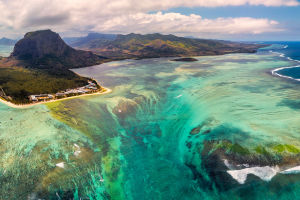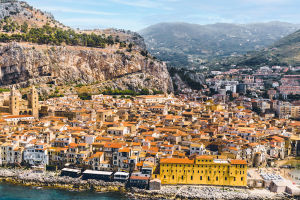Exploring the "Capital of Baroque" is an unforgettable experience for Lykkers passionate about architecture, culture, and charming towns.
Noto, located in southeastern Sicily, is famous for its stunning baroque style buildings, warm-colored stone facades, and a magical atmosphere especially at sunset.
This guide offers all the essential details on what to expect, where to go, how to get there, and practical tips for visiting Noto and its surroundings.
Location and Accessibility
Where Noto Is Situated
Noto is in the province of Siracusa, about 40 km inland from the coast. Nestled at the foot of the Iblei mountains, it sits 150 meters above sea level, offering a cooler setting than coastal towns nearby.
How to Reach Noto
The easiest way to reach Noto is by car, with rental services available at nearby airports for flexibility in exploring southeastern Sicily. Alternatively, public transport options include buses from major Sicilian cities such as Siracusa, Modica, and Ragusa, and regional trains connecting Noto with surrounding towns and the coast. Timetables and routes can be checked online to plan the trip efficiently.
Historical Background and City Layout
From Old Noto to the New City
The original Noto, now known as Noto Antica, was destroyed by a severe earthquake in 1693. The new city was rebuilt 8 km downhill with a precise urban plan focused on harmony and beauty.
This rebuilt Noto is a masterpiece of baroque architecture, designed by renowned architects and craftsmen of the time, with elegant streets, squares, staircases, and ornate buildings.
City Structure and Walkability
The historic center is compact and easily walkable, making it perfect for a relaxed visit. The main street, Corso Vittorio Emanuele III, runs through the heart of Noto, lined with impressive palaces and squares.
Main Attractions and Itinerary
Porta Reale
This grand entrance gate marks the start of the historic center. Built in 1838, it welcomes visitors with classic architecture and sets the tone for the elegant city.
Piazza del Municipio: Cathedral and Palazzo Ducezio
At the heart of Noto lies the cathedral, rebuilt after the earthquake and recently restored following a dome collapse. Its facade and bell towers glow warmly at sunset. Across the square, Palazzo Ducezio, home to the city hall, impresses with its 20 arches and an elegant mirror hall. Visitors can access the rooftop terrace for panoramic views of the cathedral and the city.
Basilica and Monastery of SS. Salvatore
This complex includes a basilica, monastery, and seminary. The basilica's elevated terrace provides spectacular views of the cathedral square. Visitors can climb the bell tower for sweeping views of the historic center and explore former monastic quarters.
Via Corrado Nicolaci and Palazzo Nicolaci
This street features lavish baroque palaces adorned with sculptures and wrought iron balconies. Palazzo Nicolaci stands out for its elaborate façade and extensive interiors, including richly decorated salons and terraces with views extending to the sea. Entry requires a small fee.
Other Notable Sites
Nearby, the San Domenico buildings impresses with its yellow stone façade and elegant baroque style. The Teatro Tina di Lorenzo, built in the 19th century, is a charming neoclassical theater known for its refined interiors and horse-shoe shaped auditorium.
Visiting Tips
Time Needed
A quick visit can be completed in half a day, covering the main streets and landmarks. For a thorough experience, including museum entries and leisurely breaks, plan a full day. Evening visits, especially at sunset, add a magical touch as the city's golden stone changes colors.
Opening Hours and Ticket Prices
Most attractions open during daytime hours, typically from morning to early evening. Entrance fees range from about 2 to 4 euros per site. Combined tickets are sometimes available for multiple locations, offering savings.
Parking
For those arriving by car, blue-lined parking spaces are available in the historic center, with paid lots near Via Cavour providing convenient access.
Nearby Destinations and Beaches
Surrounding Towns
Southeastern Sicily offers several UNESCO World Heritage towns rich in baroque architecture: Modica, Ragusa, Scicli, Palazzolo Acreide, and Caltagirone are all within an hour's drive. The coastal village of Marzamemi, about 23 km away, is ideal for a seaside lunch or dinner.
Beaches Close to Noto
For relaxation between sightseeing, several beaches are accessible within a short drive:
- Fontane Bianche: 20 km away, known for white sands and crystal waters.
- Spiaggia del Gelsomineto: A quieter spot with pine trees and free access.
- Calamosche Beach in the Vendicari Nature Reserve: A protected area with stunning turquoise waters.
- San Lorenzo Beach and Marina di Noto: Both offer a mix of free and equipped areas with services.
Accommodation
Places to Stay
Noto offers a variety of accommodations, from charming B&Bs and guesthouses to boutique hotels located within historic buildings. Staying in the city center allows easy walking access to all major sights.
Average Costs
Prices vary by season. On average, budget options start around 50–70 euros per night, while mid-range hotels typically cost 80–120 euros. Luxury stays and unique historic properties can exceed 150 euros, especially during peak season or festivals.
Events
Infiorata di Noto
Each May, Noto hosts the famous flower festival "Infiorata", where the streets are covered with elaborate flower carpets designed around a yearly theme. The event runs for several days, with a ticket price of around 5 euros.
This is an exceptional time to experience local culture and vibrant colors.
To Summarize
Noto, with its extraordinary baroque architecture, warm stone hues, and scenic views, offers an enriching experience for any Lykkers traveler. The compact historic center invites exploration on foot, where every corner reveals a story of artistic revival and urban elegance.
From impressive buildings and palaces to nearby beaches and charming villages, Noto is a perfect base to discover the treasures of southeastern Sicily. With accessible transport, affordable accommodation, and friendly local amenities, planning a visit to Noto is simple and rewarding any time of the year.


